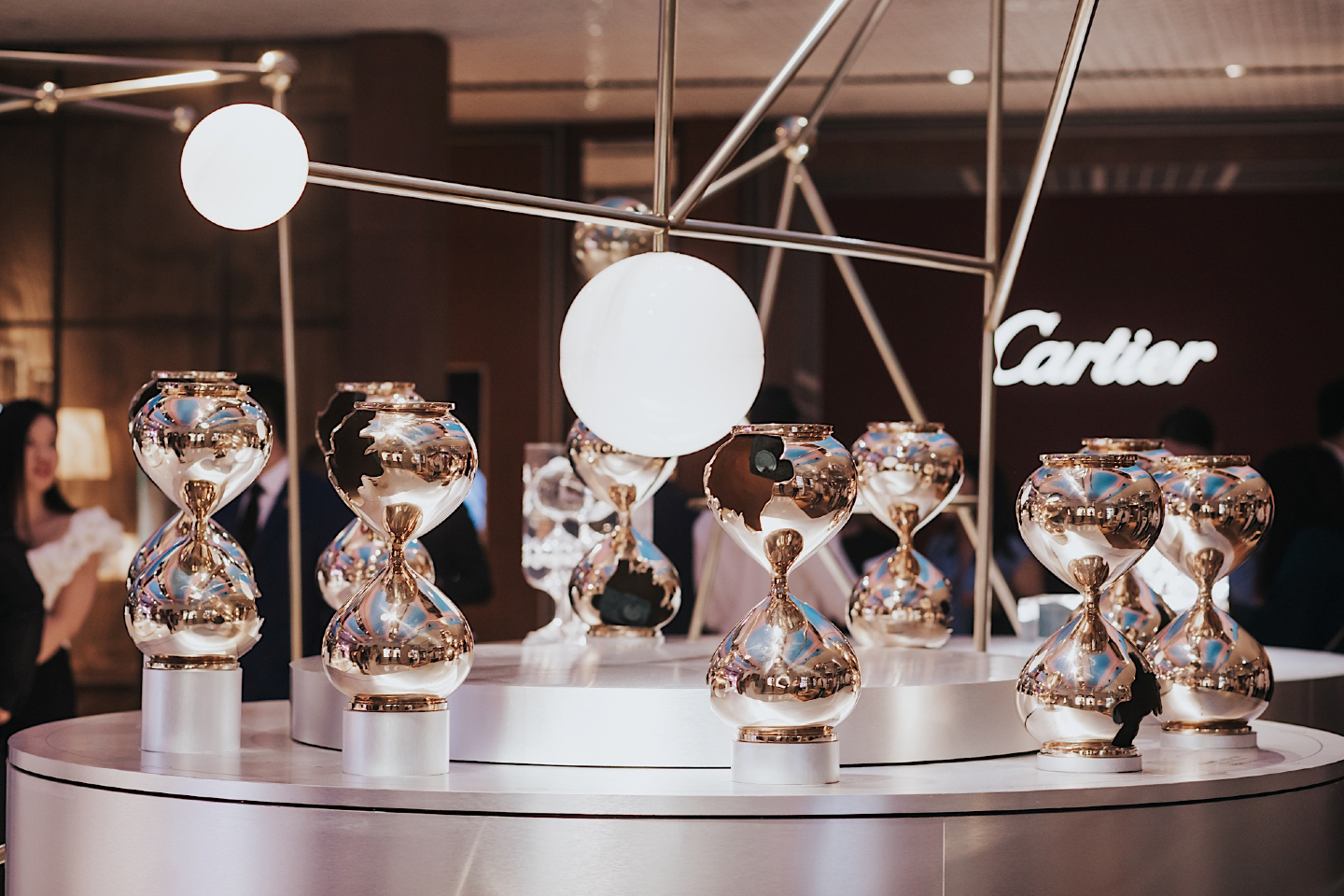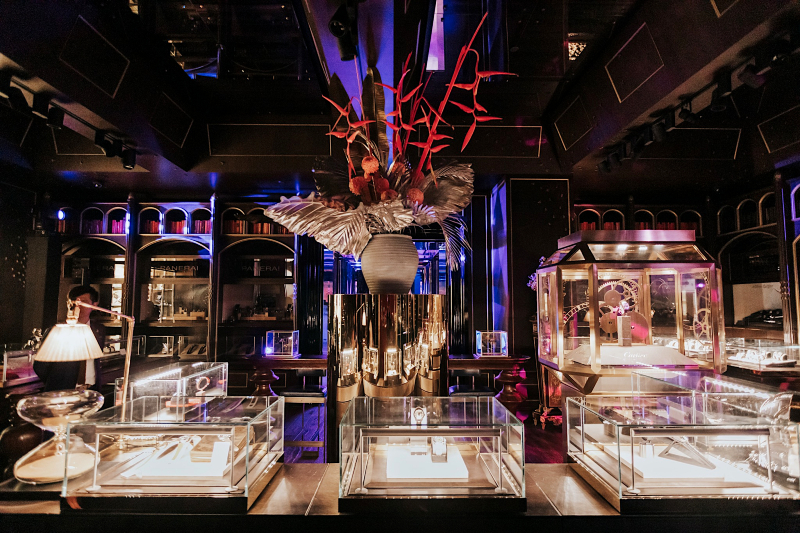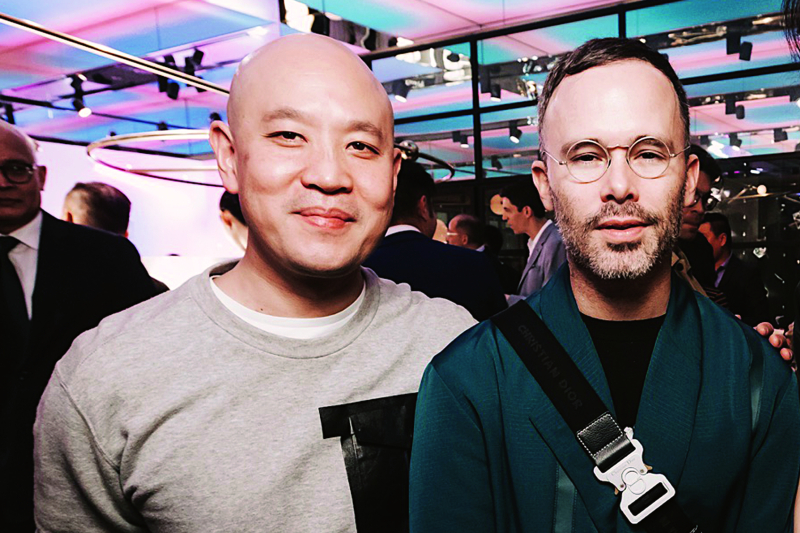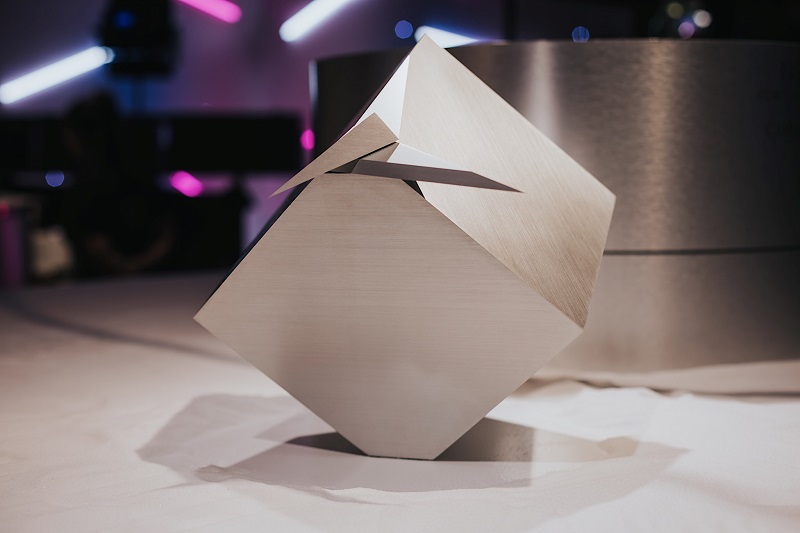
Arsham's Bronze Hourglass (All photos: The Hour Glass)
With the mission to advance watch culture, The Hour Glass has grown into one of the leading watch specialists in the world. To celebrate its 40th anniversary, the watch retailer has curated an art exhibition that features specially commissioned artworks by leading international artists. Options was invited to its Singapore flagship store, Malmaison by The Hour Glass, to view the Then Now Beyond exhibition, celebrate the company’s milestone anniversary and speak to group managing director Michael Tay. “My grandfather started in the watch industry in 1942. He opened a small kiosk in an amusement park in Singapore but very quickly had to close it down because in [the same year], the Japanese invaded us. [The kiosk] was open for six months before he had to shut it down. He was then able to reestablish the business after the war,” Tay says.
His parents met at university in Melbourne. When they returned to Singapore, they worked in their respective trades — his father as a medical practitioner and his mother as a pharmacologist and lecturer. “When they returned to Singapore in the early 1970s, they came to realise that there was an abundance of opportunities in Singapore to reposition the speciality luxury retail business. Back then, most places like my grandfather’s company were selling watches alongside white goods and optical equipment. There was no real dedicated specialist watch retailer. And so, in 1979, The Hour Glass was born,” he says.
malmaison_by_the_hour_glass.jpg

Joining the family business in January 1999, right after he finished national service, Tay had his work cut out for him. “And you know, coming into a business that was haemorrhaging cash … The fact is we didn’t have as strong a domestic business as we should have had because we focused a lot on tourists ... and on some very important regional clients, but that meant we were not in a good state financially,” he says. Tay was able to steer the business into success, dodging financial crises and putting his business acumen to good use.
He even digitised the business long before the rest of the watch industry caught up. “I kid you not, I watched literally hundreds of hours of YouTube videos on this matter and spent countless hours trying to figure out the different types of platforms that we needed. I’m a Luddite, so this is all fresh for me … At the end of the day, we want to ensure that change is filtered throughout the organisation. You have to take ownership and leadership and you have to drive that. So, I had to educate myself first and then educate the rest of the organisation, and that was a very painful process.”
To really mark The Hour Glass’s 40th anniversary, Tay wanted to do more than just special-edition watches, which was still included. “By celebrating these contemporary designers and artists, we hope to create a new narrative in watchmaking and in watchmaking arts. We hope to expand the audience, where watches will not just be viewed as another luxury object but as a cultural counterpoint to everything,” he says.
thg40tnb_danielarsham001.jpg

The artists for the Then Now Beyond exhibition were selected by a committee consisting of Tay, British architect Sir David Adjaye, OBE, and international watch specialist Aurel Bacs. The artists are Studio Wieki Somers, nendo, Marc Newson and Daniel Arsham. They were given carte blanche to create anything their heart desired. Established in 2003, Studio Wieki Somers — made up of designers Wieki Somers and Dylan van den Berg — is known for works that comment on the everyday, using unique materials to do so. The studio created the Beetle Clock, which is an observation of the decline in insect populations, namely beetles, as pesticides, urbanisation and intensive farming have destroyed their habitat. Sydney-born artist Marc Newson — who has collaborated with brands such as Apple, Louis Vuitton, Montblanc and Hermès — created Klepsydra 30’ Blue, which reinterprets the principles of a water clock by using nanoballs.
Perhaps one of the more striking pieces is by design studio nendo, headed by Oki Sato. The studio created the Cubic Clock, a work that has a unique take on time. “When we first saw the initial proposal, we were like, ‘why hasn’t anybody in the watch industry thought of doing this before?’ Because it is truly simple. And it goes to show that in our industry, we’re very inward-looking. It took somebody who was not in the industry, somebody completely outside of it, to develop a really fresh take on a time-telling device. It’s very poetic because when the hands beat at 12, it becomes the perfect cube. Perfection of the cube exists only for a moment and then the hands start moving apart again. So you have literally two seconds a day, at midnight and noon, where perfection exists,” says Tay.
cubic_clock.jpg

Before the anniversary party, we also had the opportunity to speak to the fourth artist, Daniel Arsham, whose oeuvre explores future archaeological perspectives and how items decay. For Then Now Beyond, Arsham created the Bronze Hourglass, and, although he has done hourglasses before, bronze was a new medium. “The objects [inside the hourglass] are a clock, which is obviously a recorder of time, and a camera, which is this thing that freezes time. And the polishing on the exterior actually came kind of by accident. I’ve never used polished bronze in that way, but something about the way it bends light and kind of bends this space around the object just felt fitting. The breaks in the piece to reveal the inside are done by hand, by cutting into the wax,” he explains.
Originally, Arsham wanted to experiment with aluminium, but while working on the hourglass at a foundry, he felt the reflective quality of the bronze was more elegant. The interesting thing about his bronze work is that, if left unpolished, it will patina. When asked if he would polish the work or let it patina, Arsham says he would do one of each. Tay, however, was swayed more by the patina: “Let it patina. Because I think that in itself, patina is something that is a marker of time. That’s why vintage objects are so desirable to some. They want objects with age, they want the object to tell that passing of time.”
The 'Then Now Beyond' exhibition works are on display at Malmaison by The Hour Glass, Singapore until Feb 29.
This article first appeared on Jan 20, 2020 in The Edge Malaysia.


